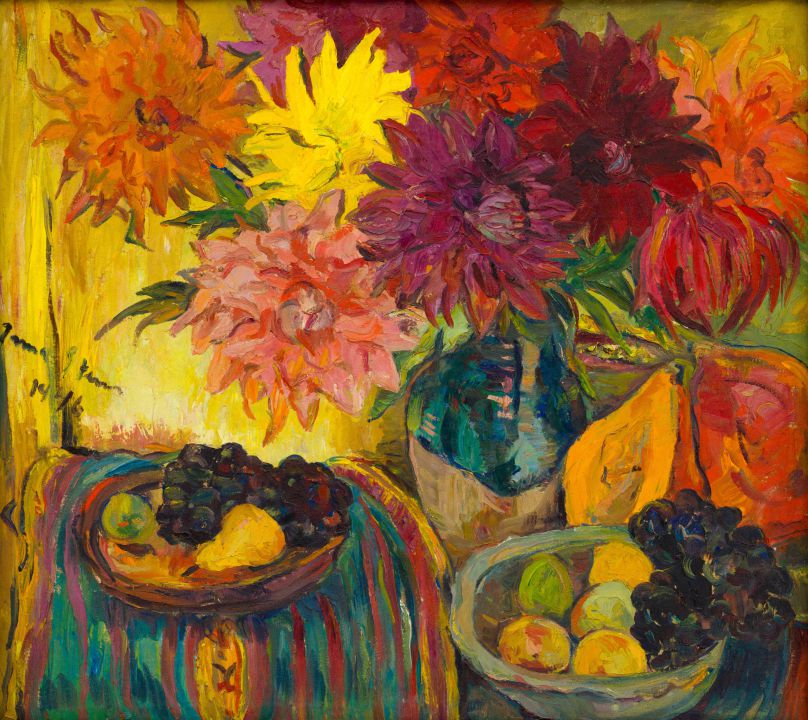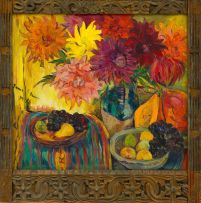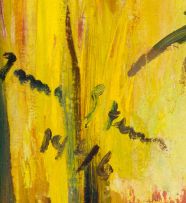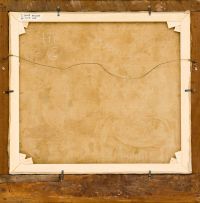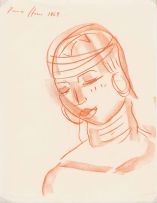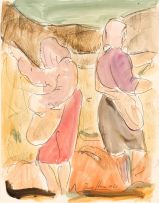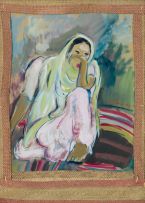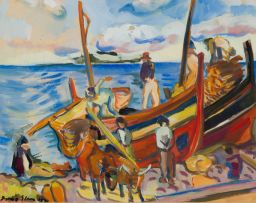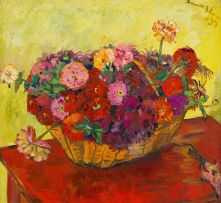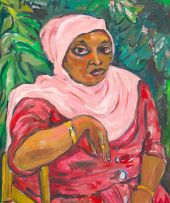Modern, Post-War and Contemporary Art
Live Auction, 20 May 2019
Evening Sale
Incl. Buyer's Premium & VAT
About this Item
signed and dated 1946
Notes
Although Irma Stern produced still life paintings prolifically throughout her life, her biographers agree1 that those of the 1930s and 40s represent the highwater mark of her career. Along with the portraits of this period, these works unequivocally express her confidence and mastery, and are a compelling testimony to her virtuosic gifts of colour and expression. While the still life paintings share some common characteristics - the inclusion of objects from her collection, the canary yellow backdrop of her studio, a shallow perspective that tilts the flowers into the viewer's space with exuberant urgency - each is a unique example of Stern's unconstrained delight in celebrating the splendour of these canonical signifiers of the beauty, joy and transience of life.
Stern clearly loved flowers, and her taste in them was diverse, ranging from the 'larkspurs, stocks, enormous geraniums, all shades of pelargoniums, great balls of white and also yellow daisies, violet and yellow poppies, sunflowers, and many, many roses, carnations, petunias, fuchsias'2 that grew in her garden, to exotic hothouse varieties sold by local flower sellers. While there is no evidence to suggest that she was at all interested in any conventional symbolic 'language' of flowers, she certainly returned repeatedly to some varieties that lent themselves to her expressive technique. These included chrysanthemums, lilies, anthuriums, zinnias and, as with this example, dahlias. Indeed, this is the fourth of five paintings featuring dahlias produced during the 1930s and 40s and is one of the most elaborate and compelling, both compositionally and formally.
This painting was produced after Stern's second visit to Zanzibar in 1945 (she first visited the island in 1939) and is formally in keeping with the work she produced in the early 1940s influenced by these visits. The pictorial elements - in this case a generous, multicoloured bouquet of dahlias in a partially glazed Chinese martaban jar,3 two bowls of fruit on Zanzibari woven mats,4 and two large, sliced papayas - are presented in a flattened pictorial space, crowding the surface of the canvas. The bright yellow background of Stern's studio is largely obscured by the flowers, which set the overall tonalities of orange, red and yellow, and has the effect of increasing the shallowness of the space rather than providing a sense of depth. A strong tonal contrast is provided by the dark purple-black of two bunches of grapes, one in each bowl, a tone that is picked up in the dark viridian of the jar's glaze. Bluish-green hints offset against complementary tones of red and mauve are repeated in the stripes of one of the woven Zanzibari mats, which in turn is tilted forward so dramatically as to be almost parallel with the picture plane. The eye is drawn to the intensely bright yellow dahlia in the bouquet, while the tones of intense lime green in the fruit bowls tantalise the periphery of the viewer's vision. Further reinforcing the formal link to works of the Zanzibar period, this still life is presented in a Zanzibari frame with carved flower motifs.
At once a dramatic and captivating assertion of Stern's unchallenged mastery of expressive form and an unapologetic celebration of exoticism and sensuality, it is unsurprising that this painting set a record for the highest price paid to that point for a twentieth-century South African artwork when it last appeared on auction in 1999.5 However, it is ultimately the painting's virtuosic celebration of the expressive possibilities of the still life that makes it an extraordinarily compelling work, and one of the artist's finest.
1. See Esmé Berman, Neville Dubow, Marion Arnold, and Irene Below, for example.
2. From a letter to her friend Trude Bosse, dated 14 November 1928, quoted in Karel Schoeman (1994) Irma Stern: The Early Years, Cape Town: South African Library, page 88. Christopher Peter, long-time Irma Stern Museum curator, notes that today the situation is very different: 'The garden at 'The Firs' … is cold, shady and tricky. … Not nearly enough sun or the right soil for zinnias, larkspurs and delphiniums which often feature in her still lifes' (Christopher Peter (2018) 'The Creation of Irma's Still Lifes - A Personal View', in Wilhelm van Rensburg (ed.), Life Force: The Still Lifes of Irma Stern, Johannesburg: RMB Turbine Art Fair, unnumbered page).
3. A martaban jar of southern Chinese origin, possibly Yuan or later. Irma Stern Trust Collection accession number 533.
4. Photographs of similar mats are illustrated in Irma Stern's Zanzibar (JL van Schaik, Pretoria, 1948; pages 42, 63-64 and 80).
5. Chimaimba Banda, Irma Stern painting sells for record R1m, 8 November 1999. Accessed 18 August 2018. https://www.iol. co.za/news/south-africa/irma-stern-painting-sells-for-recordr1m- 18924.E.
Federico Freschi
Exhibited
Standard Bank Gallery, Johannesburg, Irma Stern: Expressions of a Journey, 25 September to 29 November 2003.
Literature
Standard Bank (2003) Irma Stern: Expressions of a Journey. Johannesburg: Standard Bank. Illustrated in colour on page 163.
